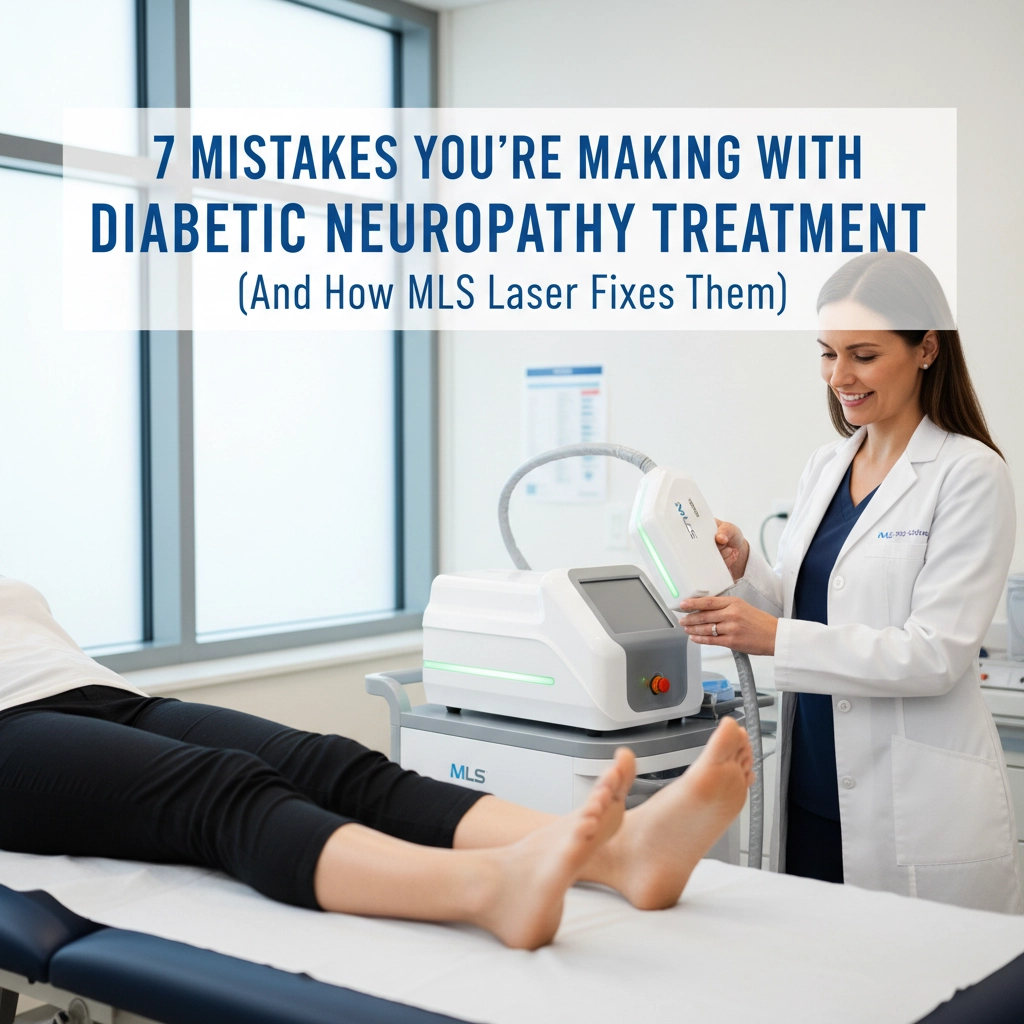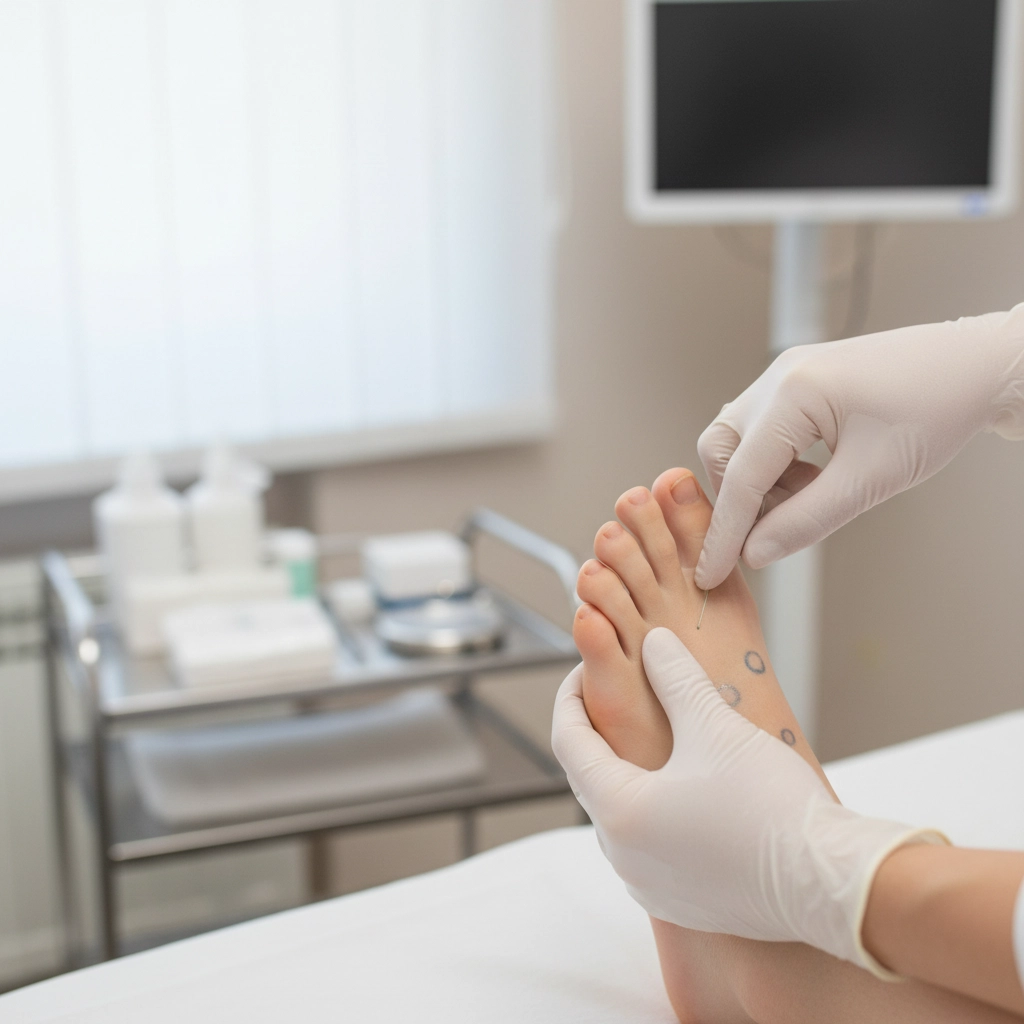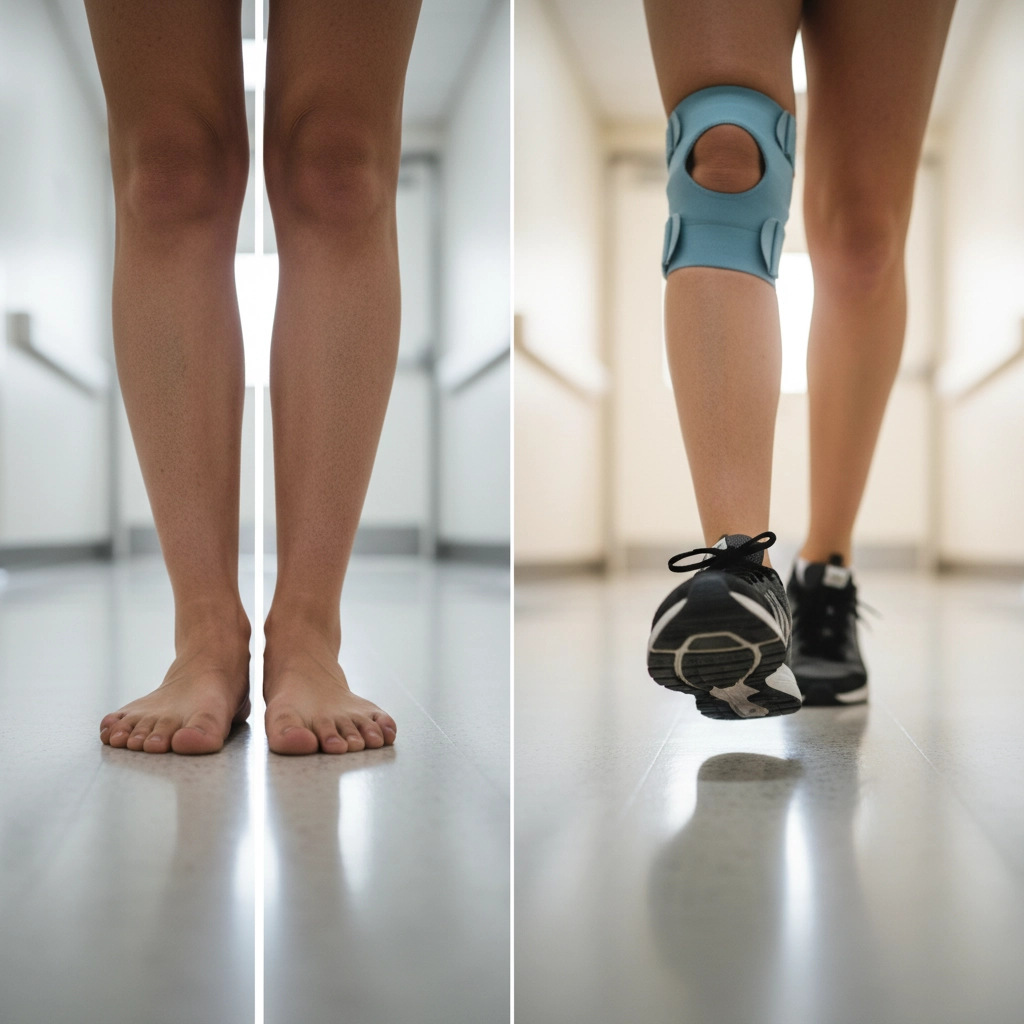Dr Mark Dailey
Blog for Your Health
7 Mistakes You're Making with Diabetic Neuropathy Treatment (And How MLS Laser Fixes Them)

Are you living with the burning, tingling, and numbness of diabetic neuropathy? If you're like most people dealing with this condition, you might feel like your own body is working against you. The shooting pains, the sleepless nights, the constant worry about your feet – it's exhausting.
Here's the thing: most people with diabetic neuropathy are unknowingly making critical mistakes in their treatment approach. These mistakes aren't just slowing down their recovery – they're actually making their condition worse. But here's the good news: once you understand these mistakes and how advanced MLS laser therapy addresses them, you can finally start getting the relief you deserve.
Mistake #1: Not Keeping Blood Sugar Under Control
This is the big one – and unfortunately, it's the most common mistake we see. High blood sugar is like poison to your nerves. When your glucose levels spike and stay elevated, it damages your nerves in two devastating ways: it reduces circulation (so your nerves don't get the oxygen and nutrients they need), and it increases inflammation (which intensifies that burning, shooting pain you're experiencing).
Many people think they're managing their blood sugar well, but they're actually experiencing dangerous spikes throughout the day. The solution isn't just checking your levels occasionally – it's about creating steady, controlled glucose levels by eating fiber-rich foods like vegetables and whole grains, avoiding large spikes, and monitoring consistently.
How MLS Laser Helps: While laser therapy can't control your blood sugar directly, it dramatically improves circulation to your damaged nerves and reduces inflammation. This means even while you're working on blood sugar control, your nerves are getting better blood flow and healing support.
Mistake #2: Being Too Sedentary Due to Pain
We get it – when your feet are burning and tingling, the last thing you want to do is move around. But here's the cruel irony: avoiding movement because of neuropathy pain actually makes the pain worse. When you're sedentary, your circulation gets even worse, your muscles weaken (putting more strain on already damaged nerves), and your joints get stiff.
The fear of pain keeps people stuck in a cycle where they move less, feel worse, then move even less. Even gentle movement like a 5-10 minute walk or simple leg stretches can start breaking this cycle.
How MLS Laser Helps: MLS laser therapy reduces pain immediately, making movement possible again. Patients often tell us that after just a few treatments, they can walk to their mailbox again or stand long enough to cook dinner – activities that seemed impossible before.

Mistake #3: Relying Solely on Conventional Medications
This might be the most frustrating mistake of all. Traditional neuropathy medications help less than half of patients who try them, and they come with a laundry list of side effects – drowsiness, weight gain, digestive issues, and even addiction risks with opioid-based treatments.
Worse yet, these medications only mask symptoms. They don't address the underlying nerve damage that's causing your pain in the first place. You're essentially putting a band-aid on a problem that needs real healing.
How MLS Laser Helps: Unlike medications that just cover up symptoms, MLS laser therapy actually stimulates cellular repair at the source of your pain. It's like the difference between turning down your smoke detector and actually putting out the fire.
Mistake #4: Ignoring Early Warning Signs
Too many people dismiss the first signs of neuropathy as "just getting older" or "normal aches and pains." That occasional tingling in your toes, the mild burning sensation in your feet at night, or the feeling like you're wearing thick socks when you're barefoot – these aren't normal, and they're your nerves crying out for help.
The earlier you address neuropathy, the more nerve function you can preserve and restore. Waiting until you can't feel your feet or you're falling regularly means you've let permanent damage occur.
How MLS Laser Helps: MLS laser therapy is most effective when started early, but even patients with advanced neuropathy see significant improvement. The laser's ability to stimulate new blood vessel formation means it can reach nerves that conventional treatments can't touch.
Mistake #5: Using Only Topical Treatments
Creams, gels, and patches might provide temporary surface-level relief, but diabetic neuropathy isn't a surface problem – it's happening deep in your nerve tissue. These topical treatments are like trying to water a tree by spraying its leaves instead of watering the roots.
Many people spend hundreds of dollars on topical treatments that provide minimal, short-term relief while the underlying nerve damage continues to progress.
How MLS Laser Helps: MLS laser penetrates deep into tissue – up to 4-5 centimeters below the skin surface. This means it reaches the actual damaged nerve tissue where healing needs to happen, not just the surface where you feel the symptoms.

Mistake #6: Not Addressing Nutritional Deficiencies
Your nerves need specific nutrients to function and repair themselves, especially B vitamins like B1, B6, and B12. Many people with diabetes have absorption issues or dietary restrictions that create deficiencies in these critical nutrients. Without proper nutrition, your nerves simply can't heal, no matter what other treatments you try.
This is especially true for vitamin B1 (thiamine), which is often depleted in people with diabetes. Your nerves use thiamine to produce energy and maintain their protective coating.
How MLS Laser Helps: MLS laser therapy enhances cellular energy production (ATP), which helps your cells make better use of available nutrients. When combined with proper nutritional support, this creates an optimal healing environment for damaged nerves.
Mistake #7: Waiting Too Long to Seek Advanced Treatment
This might be the most costly mistake of all. Many people suffer for months or even years with progressively worsening symptoms, trying one failed treatment after another, before seeking advanced options like MLS laser therapy.
Here's what happens during that time: more nerve damage occurs, your quality of life deteriorates, and you lose precious time when earlier intervention could have prevented permanent damage.
The attitude of "I'll just live with it" or "there's nothing that can be done" keeps people trapped in unnecessary suffering while their condition gets worse.
How MLS Laser Helps: MLS laser therapy works by addressing the root causes of neuropathy at the cellular level. It stimulates the formation of new blood vessels (improving circulation), reduces inflammation, enhances cellular energy production, and actually helps nerves repair themselves.
The MLS Laser Difference: Real Healing, Not Just Pain Management
Here's what makes MLS laser therapy different from everything else you've probably tried: it actually heals damaged tissue instead of just masking symptoms.
The treatment uses two specific wavelengths of light energy that penetrate deep into your tissue and work at the cellular level. Think of it like strength training for your nerves – each treatment makes them a little stronger and healthier.

Most patients start noticing improvements within the first few treatments, with optimal results developing over 6-8 weeks as tissues heal and regenerate. The treatments are comfortable (most people describe a gentle warming sensation), quick (10-15 minutes), and require no downtime or preparation.
A Comprehensive Approach That Works
At Oneonta Neuropathy Center, we don't just focus on one aspect of neuropathy treatment. Dr. Dailey combines MLS laser therapy with nutritional support, lifestyle education, and blood sugar management strategies to give you the best possible chance of recovery.
Our typical treatment protocol includes an initial intensive phase of 12 MLS laser treatments over 6 weeks, followed by monthly maintenance treatments. We also provide targeted nutritional supplements and education about diet, exercise, and lifestyle modifications that support nerve healing.
Your Next Step Toward Relief
If you're tired of living with the pain, numbness, and limitations of diabetic neuropathy, and you're ready to try a treatment that actually addresses the root cause of your symptoms, it's time to learn more about MLS laser therapy.
Don't let another day go by making these costly mistakes with your neuropathy treatment. The sooner you address the underlying nerve damage, the better your chances of significant improvement.
To learn more about how MLS laser therapy can help with your specific situation, visit our peripheral neuropathy information page or contact Oneonta Neuropathy Center today. Dr. Dailey and his team are ready to help you get back to the active, pain-free life you deserve.
